Bird of the Week: Gray Crowned Crane
It’s our first ever crane (!!!) so we’re kicking things off with a banger.
It’s not news to anyone, and certainly not anyone reading this blog, but the world of birds is overwhelmingly expansive and awe-inspiring. As such, I try to give the staff of Bird of the Week (aka me and Jack) a lot of grace about our failings (there have been a few over the years!). Alas, time is short and the birds are abundant. Still, in scanning our list of every Bird of the Week a few days ago, I was stunned to discover we’ve never done a crane. We’ve never done a crane?? The injustices never cease.
That vacancy is coming to an end today, and happy to say that our inaugural crane might just be the baddest and most legendary crane of them all. It’s a jaw-dropping bird, with a gloriously unassuming name: the gray crowned crane. Bow down!!
The gray crowned crane is also known as the African crowned crane or East African crane, among other names, which makes sense as it resides in East Africa and is the national bird of Uganda. It even appears on the country’s flag—though that symbol has its origins in British colonialism, so take from that what you will. Fuck the British and fuck colonizers everywhere, but it’s not the bird’s fault that militarization put its beauty to use. It certainly deserves the pedestal it's been placed on.
Anyway! Back to the simpler things in life. The gray crowned crane has unreal plumage, with swooping, delicate layers of white, yellow, brown, and gray cascading down its neck and body. And the head? Forget about it. This aptly (though boringly) named bird literally has a crown of golden feathers on its head with spectacular reddish-orange accents. And let me just say, as someone who wore a flower crown on her wedding day and looked at endless crowns (both floral and otherwise) for the occasion, even the richest bride on earth could NEVER compete with this. This crown takes the cake.
Gray crowned cranes are kind of like the natural athletes of birds. You know when you see a tall person with unusually long limbs and think, “okay they must be a basketball player … or swimmer? … or dancer??” That’s the gray crowned crane, baby. These birds tend to be found in pairs and choose their breeding companions through an elaborate dance ritual. Do not keep scrolling without hitting play on this:
They also serenade each other…
And honk! While some might classify these cranes as “divas,” I personally think they are just vibing and being themselves in spectacular fashion. If you want more, I’d be remiss not to tell you that there are endless YouTube videos of these beauties in action, and scrolling through them is a great way to go brain off and serotonin hose on.
Gray crowned cranes can be found in wetlands, flooded grasslands, and other open habitats, and may even travel to follow the rain. They also plan their breeding around the rains as well. This is big-time water sign behavior, which makes total sense since many gray crowned cranes are born in February, aka Pisces season. They have an eclectic diet of insects, grains, grasses, and small invertebrates, and roost in trees thanks to a long toe at the back of each foot, which is unique and elite behavior. And they spend most of their time on the ground but can fly if they want to. Chic!!
Okay I’ve been waiting to get to the absolute coolest thing about gray crowned cranes, but it’s finally time. Are you ready? Gray crowned cranes aren’t just the most fabulous-looking crane or the best dancers in the avian world, they are also the oldest type of crane on earth. The OG crane! The crane from which all other cranes originate! To give you some sense of what that means, the gray crowned cranes ancestors date back as far as 40! million! years!, which makes it not quite a living dinosaur, but pretty damn close.
I hate to end on a down note, but the historic run of the gray crowned crane is a big part of what makes its endangered status even more wrenching. These birds are weird, elegant, perfect—and they’ve seen some shit over the many, many years they’ve inhabited this planet. We must protect them at all costs, now and forever. We must make sure they’re still here dancing and honking, long after the rest of us are gone.
That said, I think I speak for all of us when I say we do love to watch them go (see below) as long as it’s not for long.
Don’t forget, you can always check out our complete Bird of the Week list here. Got a suggestion for a bird we should cover? PLEASE get in touch at hello@discourseblog.com.


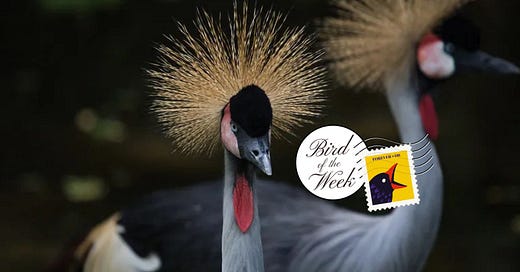



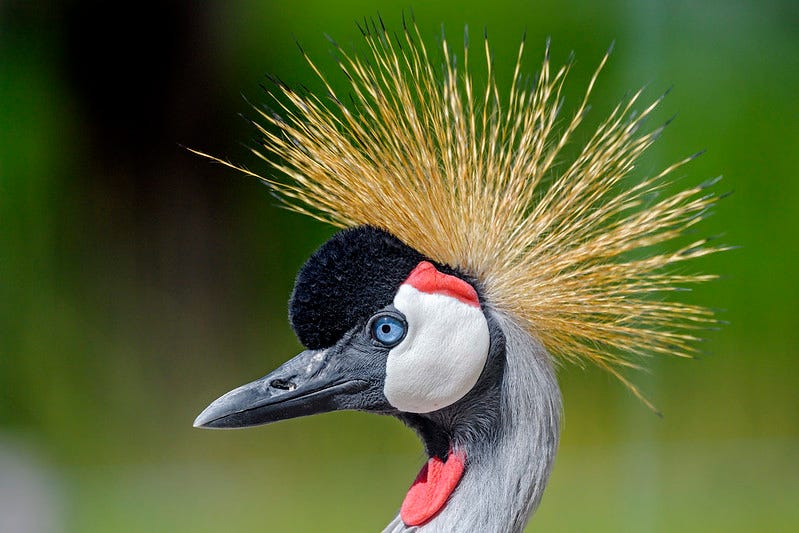
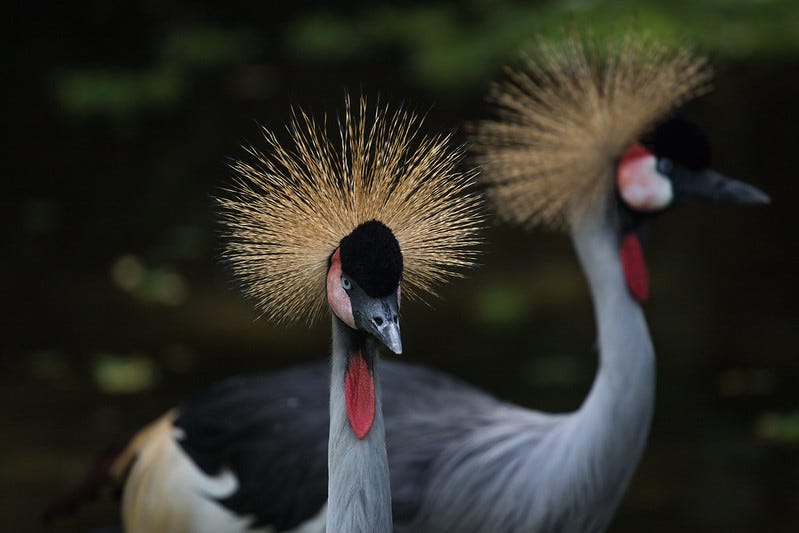
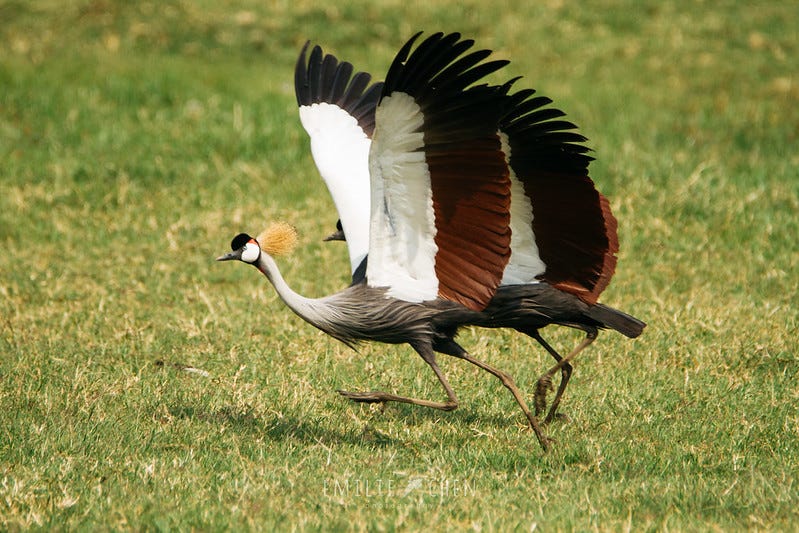
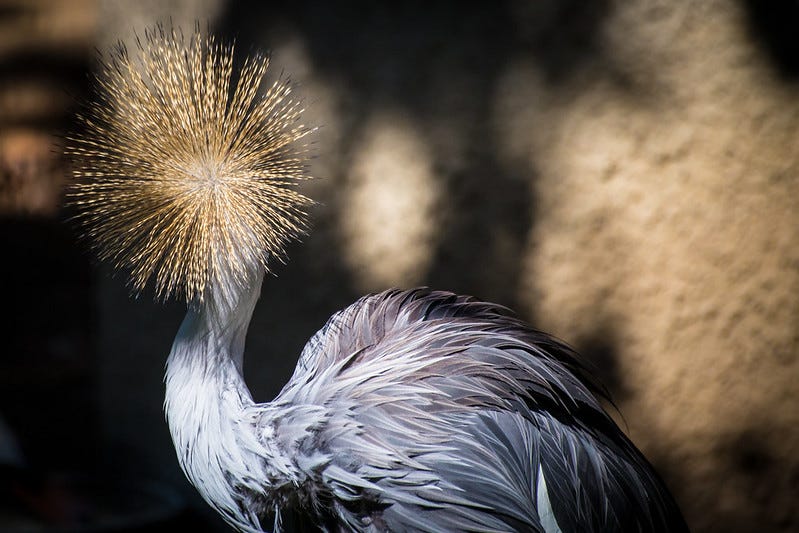
One wonders if they miss the rains down in Africa...